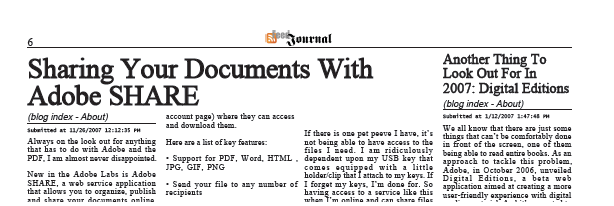An interesting tidbit for this week. There’s a new format on the block and it looks like it’s drumming up some buzz as the next PDF-Killer.
The last one to hit the industry, if I remember correctly, was the XML Paper Specification (XPS) format about 4 years ago when Microsoft Office 2007 was being released with XPS creation capabilities. This time around, it’s the CDF format—Computable Document Format, a newly innovated open format that puts “interactive documents” on another level.
Having been developed by the team over at Wolfram.com, the CDF format uses mathematical computation technology to render the live interactive element of its content. The company is known for its computing software program and platform, Mathematica, which, in a nutshell, is used for computing data visualizations needed in fields dealing with complex data, information analysis, and mathematical formulae.
What is the CDF format?
According to the site, the CDF is “as everyday as a document, but as interactive as an app.” Instead of simply viewing static text, images, and tables, with a CDF document you can manipulate them through inputting data, clicking on controls, and moving sliders. If you have a graph with data calculated and projected over time, you can modify those values and see the changes visualized–on the spot.
Looking at the CDF files they have on-site, you can see why it’s being called a PDF-Killer. From a user point of view, the CDF format shares a lot of the same basic similarities and uses as the PDF: it requires a file viewer (CDF Player), can contain different types of content, and is only editable in Mathematica or other CDF content creators (creating an interactive CDF actually requires a bit of coding rather than a one click creation method, though).
The PDF already has interaction capabilities with the ability to play videos, Flash games, and manipulate 3D objects. But so far, as Conrad Wolfram (strategic & international development director of Wolfram) points out, those types of interactivity are pre-generated for you.
The CDF format provides a unique way of creating, consuming, and understanding informational content. As it is with all formats, though, each has its own strengths and uses, some of which are necessary, some not. Simple resumes and articles, for example, are still perfectly fine as a PDF. Live data and textbooks, however, may be better in CDF.
Rather than a question of will the CDF replace the PDF, I think the question facing PDF users is how the CDF format will interact with PDF files over the long run. The format was just launched, so it’s still in the early stages of adoption. So far, as per the FAQ, you can import content from PDFs and the CDF Player plugin is only supported by web browsers (no embedding CDF files in PDF, for instance).
Download the CDF player and take look at a few CDF examples in action for yourself.
